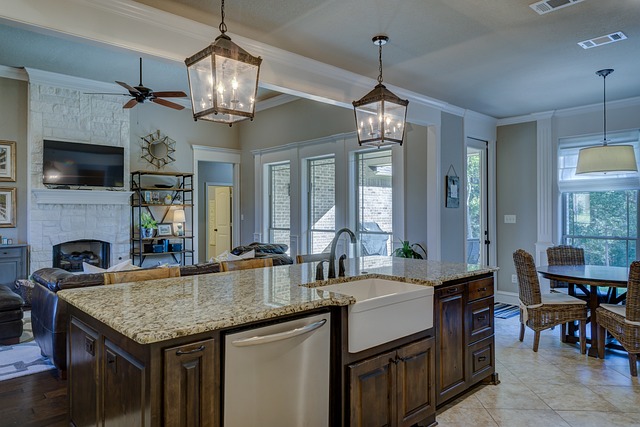Home Furnishing a new luxury home or upgrading an existing space requires carefully selecting furnishings that achieve both comfort and aesthetic goals. This comprehensive guide explores high-end brands and luxury items for various rooms that incorporate the finest materials and artisanal craftsmanship. Readers will discover options for living rooms, bedrooms, home offices, and more, learning what defines luxury among top manufacturers. Practical advice ensures purchases align with individual style preferences for an impressively appointed home.
Defining Luxury in Home Furnishing
Luxury home furnishings refer to pieces that are made from the finest materials using skilled craftsmanship. Rather than focusing on superficial style trends, true luxury is defined by sophistication, attention to detail, and items built to last for generations. Signs of quality construction include mortise-and-tenon joints, dovetailed drawers, hardwood solids instead of veneers, and hardware made from premium metals like brass or bronze rather than common plated zinc. For wealthy clientele, luxury means investing in heirloom items with intrinsic rather than commercial value. Before deciding what constitutes luxury, examine a piece’s materials, joints, hardware and overall build to determine its inherent worth.
Identifying Your Aesthetic Preferences
Defining one’s style is crucial for choosing luxury home furnishings. Consider if your tastes align with minimalism, ornate neoclassical styles, mid-century modern, cottage core, or globally-influenced designs. Looking at photos of luxury properties can help identify the aesthetic you find most appealing. It’s also important to define if you prefer traditional, contemporary, or eclectic blended looks. Once confident in your preferences, seek luxury pieces with clean lines, exquisite detailing, and quality materials that align with and enhance your interior style. Style is highly subjective, so don’t be afraid to experiment until finding pieces you genuinely love.
Furniture Selection
From sofas and chairs to beds, consoles, and desks, furniture anchors a luxury home. Seek classic silhouettes made using premium woods like walnut, oak, or mahogany with mortise-and-tenon joinery rather than staples or nails. Upholstery should be tightly tailored with luxurious fabrics like Italian linen, cashmere, or Vicuna wool. Hardware like drawer pulls should exude understated refinement rather than flash. Consider commissioning custom furniture to obtain exactly the scale, proportions, and materials desired. Luxury brand names like Roche Bobois, B&B Italia, or Dedon are known for furniture featuring exquisite design and construction at the highest level.
Investing in Quality and Durability
In luxury home furnishing, quality materials are paramount. Hardwood solids, Carrara marble, wool, and cashmere are examples of premium materials signaling sophistication. Hardware should be crafted from bronzed or brass rather than lesser metals. Fine leathers hold their shape while feeling incredibly soft. Rugs should be hand-knotted using Eurasian wool. Upholstery fabrics must withstand heavy use while maintaining their appearance and hand. When choosing materials, consider durability, how they will age, and if they can be passed down through generations. Pieces crafted from the most luxurious, resilient, and natural materials will maintain their value for decades of enjoyment and appreciation.
The Finishing Touches of Luxury
Fine art, sculpture, antique accessories—these luxurious finishing details elevate a home into a true showplace. Focus on original oil paintings, bronze sculptures, antique furniture, or luxury John-Richard home furnishings rather than mass-produced items. Acquire museum-quality pieces that have been authenticated and appraised. Curate collections thematically, whether botanical prints, classic American landscape scenes, or modern abstract works. Carefully Source one-of-a-kind porcelain, Asian export artwork, or European antiquities to achieve a polished, worldly aesthetic. Display accessories, lamps, and objets d’art skillfully to create mood, context, and layered visual interest. The greatest luxury items provide both beauty and cultural enrichment for each new generation enjoying them.
Crafting a Cohesive Luxurious Palette
Walls, upholstery, rugs—the color palette sets the tone. Choose a restrained spectrum focusing on neutral shades which won’t date quickly such as white, creams, taupes, pale greens, or blues. Layer tactile textures including matte velvets, shagreen, hammered metals, bleached woods, or basketweaves. Monochromatic schemes instill serenity while limited contrast allows luxury materials to shine. Consider durable silk finishes that ease wipe-clean maintenance. Rich leather or stone surfaces make statements when used judiciously. Carefully curated accessories in sumptuous materials provide pops of unexpected color. A cohesive luxury palette thoughtfully balances warmth, visual flow, and longevity for many years of beautiful living.
Smart Furnishings for Modern Luxury
Today’s connected luxury home incorporates technology seamlessly. Integrate smart furniture like media benches, cocktail tables, or modular sofas with built-in charging, audio playback, and sensor controls. Enhance entertainment experiences through invisible home theater installations within custom millwork. Seek furnishings responding to occupancy sensors, lighting systems, and motorized window solutions. Premium whole-home automation allows raising and lowering temperatures and lighting with a tap. When innovating, maintain principles of unobtrusive sophistication, tactile materials, and classic design. Thoughtfully incorporating technology within luxury furnishings enhances functionality, and connectivity yet retains core values of craftsmanship and comfort for generations.
Planning Your Luxury Furnishing Investment
Significant care, research, and funds are required for true luxury furnishings. Develop a detailed budget considering desired materials, sizes of pieces, accessories, artwork, and installation. Consultation with interior designers provides accurate project envisioning and cost estimates. Financing options enable accomplishing luxurious designs in phases. Quality antiques may prove less expensive than full-bespoke pieces long term, provided comprehensive restoration budgets exist. Pursuing investment pieces one at a time allows one to enjoy each new acquisition immediately while thoughtfully developing a cohesive collection over time. Overall, devote the required resources to timelessly furnish your home at the highest level through proper planning and sourcing of heirloom quality pieces.
Care and Maintenance
Luxury furnishings represent significant investments requiring expert care. Learn proper cleaning techniques from manufacturer specifications. Choose the gentlest means to maintain desired patinas rather than stripping pieces of valuable aging or hand-rubbed finishes. Seek restoration for antique textiles, leathers, or aging hardware to sustain original qualities. Climate control preserves materials and ensures stable indoor environments. Having proper storage, safe display, and movement methods like antique dollies prevents damage. Utilize museum-grade preservation techniques like art racks, dust covers, and humidity monitors. Commit to periodic maintenance assessments, professional restoration, or reconstruction as needed. Experts protect luxury furnishings’ intrinsic value, sustaining their refined grandeur for current and future generations.
Conclusion
True luxury furnishing involves selecting timeless heirloom pieces crafted from the finest materials using age-old construction techniques. Developing an aesthetic aligned with one’s style allows one to curate a cohesive, sophisticated collection emphasizing quality over trends. Significant dedication, resources, and preservation expertise uphold luxurious furnishings’ intrinsic value for appreciation across generations. With research and care, investments in luxury décor become prized family legacies enriching lives for decades to come.
Related Post:







